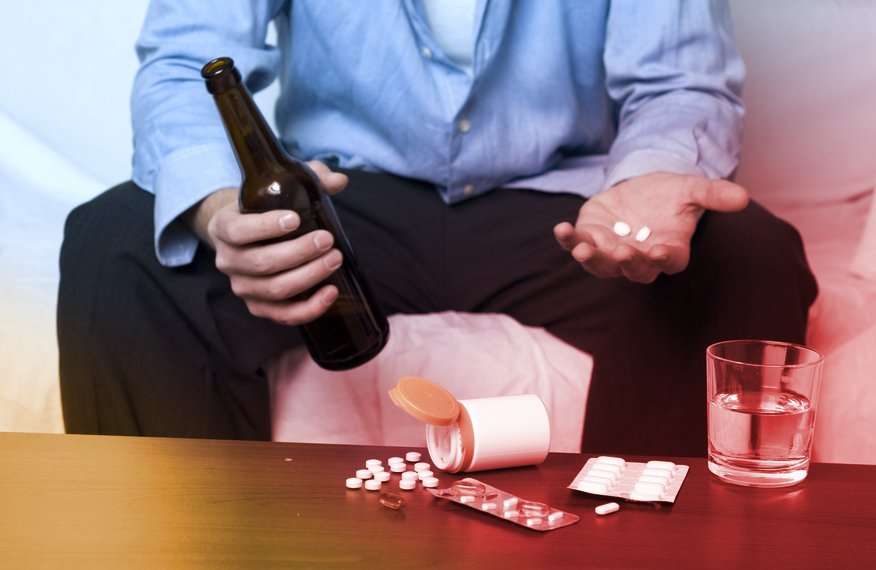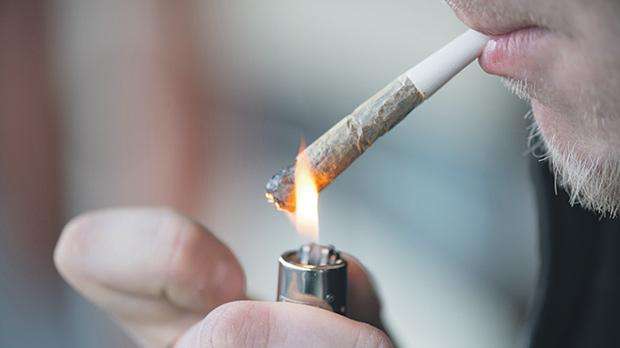Modes Of Heroin Abuse
While the chemical structure of heroin and its impact on the brain might be partially responsible for its addictiveness level, the ways in which heroin users introduce the drug to the body might also play a role.
Unlike some drugs that are swallowed and which enter the body relatively slowly, heroin users typically employ fast delivery systems, including:
- Injection
> > > READ THIS NEXT:
These methods allow all of the power of heroin to hit the body in a gigantic wave that overwhelms and overpowers. Rather than feeling slightly impaired in a slow burn, users are suddenly vaulted into a new realm of experience. This is the sort of transformation the brain tends to remember, and it tends to make heroin much more addictive than other types of substances that enter the body through oral routes.
What Is Crystal Meth
Crystal meth is chemically similar to the drug methamphetamine, a stimulant that targets your central nervous system. While methamphetamine is made as a controlled prescription drug to treat ADHD, street versions of it are illegal and highly dangerous.
There are no medical uses for crystal meth. Its contents and appearance can vary by manufacturer.
âCrystal meth is always synthetic and illegally manufactured,â Deni Carise, PhD, chief science officer at Recovery Centers of America and an adjunct associate professor at the University of Pennsylvaniaâs Perelman School of Medicine, tells WebMD Connect to Care. âBecause all crystal meth is illicitly manufactured in clandestine street labs, there are no standards.â
The ingredients used in crystal meth usually include a combination of drugs extracted from over-the-counter medications mixed with more readily available substances such as ether, acetone, iodine crystals, or red phosphorus. The additives increase the total amount of crystal meth produced in one batch to yield a larger profit.
What Are The Symptoms And Effects Of Cocaine Addiction
If you think that you or someone you know has developed a problem with cocaine misuse, its important that you are able to spot the signs and symptoms of cocaine addiction.
While cocaine can cause a number of effects that may seem positive to some people, its also important to realise that it can also produce a number of negative symptoms and long-term effects. These can include:
- Anxiety and paranoia
- Breathing problems
You May Like: How To Help My Addict Husband
Question: What Properties In Drugs Make Them Addicting
What properties in drugs make them addicting?
Recent Posts
Recent Comments
Disclaimer
Please note that our service is only meant to provide a guideline. We do not give consent or authority to the client to copy and reproduce entirely or a portion of any term paper, research paper, thesis paper, essay, dissertation, or other products of the company without proper reference.
Understanding The Brains Reward System

Practically all addictive substances act on the natural reward circuitry of the brain, altering the way a person feels, thinks and acts as they become more and more dependent on the drug of their choice. When a person drinks an alcoholic drink, takes painkillers, injects heroin or snorts cocaine, these drugs change the way their brain processes chemicals known as neurotransmitters.
Every drug behaves in a certain way to alter the brains response to stimuli. However, the result is that the practice of using the drug is so energising, relaxing or pleasurable that it triggers a persons reward system and makes them want to keep using it. After little or some time, depending on the substance, a persons brain becomes accustomed to the response. Therefore, they require more of the drug to reach the same sedating, euphoric or hallucinogenic effects. Once they have reached this stage, they may display addictive behaviours such as:
- Compulsive drug seeking
- Continued use of the drug despite the harm it is causing to themselves or their loved ones
- Stealing, lying or doing other things that hurt a persons sense of integrity just to get a hold of the drug
- Engaging in risky behaviour just to use or obtain the drug
You May Like: How To Avoid Addiction To Drugs
Which Drugs Have The Highest Rate Of Dependence
Over the years, there has been much debate among researchers regarding which substances should be classified as the most addictive. An addiction is marked by compulsive substance-seeking behavior, a growing tolerance to the drug or alcohol and the presence of withdrawal symptoms when use is stopped.
According to the National Institute on Drug Abuse, approximately 22.7 million Americans have an addiction to drugs or alcohol.
With such a significant percent of the population having an addiction, its important to take a deeper look into which substances are particularly difficult to overcome a dependence on.
Get Help During COVID-19
With just 30 days at a rehab center, you can get clean and sober, start therapy, join a support group, and learn ways to manage your cravings.
Understanding Why Drugs Are So Addicting Requires An Understanding Of The Brain And How It Is Affected By Drugs
The brain has natural pleasure sensors that release dopamine. When something good happens or we enjoy a nice meal or even a pleasant exchange with someone, the brain releases dopamine. When drugs are introduced into the body, they stimulate this natural chemical release.
This is where the issue lies physiologically. As more drugs are used, the brain depends on these higher levels of dopamine. This then lessens the initial effect or high the individual gets. When this happens, the brain reaches a tolerance level for the altered stimulation of dopamine and wants more. Then, more of the drug is needed to achieve the same high. This is when the chronic use of drugs begins to develop into an addiction.
Don’t Miss: How To Fight Addiction On Your Own
The Question Why Are Drugs So Addicting Is Difficult For A Non
Drug addiction is a chronic disease, just like any other. It does not ever go away, although it can be treated. It is not a matter of willpower or choice. Although the initial decision to start using a drug is a choice, the chronic nature of the disease makes it difficult to reign in. This is why relapsing is such a problem in recovery.
There are many other factors to consider when looking at drug or alcohol addiction. Ones environment can have an effect. If a child is reared in a home where there is drug abuse, they are more likely to move in that same path. Peer pressure is also a factor for youth. There are also biological reasons for drugs to become an addiction. Mental disorders can also result in drug addiction.
Addictive Properties Of Prescriptions
Certain medications are addictive by nature whereas others are not. For example, Tylenol is not a psychically addictive medication. The base ingredient, acetaminophen, has no properties that allow for dependency to grow, and thats really what addiction is all about a chemical and physical dependency on a drug. Once this dependency develops, the user feels like he cannot function without the substance. True to form, without the substance, withdrawal symptoms set in that make going without the substance seem unbearable. These symptoms vary from drug to drug and include:
- Fatigue
- Nausea that may or may not be accompanied by vomiting
- Irritability
- Death
- Mood swings
Aside from withdrawal, a dependency on a prescription drug is suspect if the following signs are present:
- Doctor shopping
- Overspending on drugs
- Tolerance to the medication that leads to the need for a larger dose for the drug to be effective or the user to achieve the same effect
Read Also: What Is Addictive Personality Disorder
The Good News Is That Regardless Of What Factors Play Into Addiction There Is A Solution To This Disease: Treatment
Many successful treatment programs, such as a 12-step program, have proven successful. If you had any other chronic condition, like asthma or diabetes, you would not hesitate to treat it. So why not treat the addiction as well and live a life free from that bondage.
Reference:Understanding Drug Use and Addiction. National Institute on Drug Abuse. Retrieved April, 2017.
Why Do People Get Addicted
Most people are of the mindset that addiction is a brain disease, while others reason with science in that addiction is a learned behavior from reinforcing properties that drugs contain.
The disease theory would better explain why some people get addicted while others do not. Both theories of why people get addicted are congruent. The factors that seem to be present in all people who face addiction are:
- Biological This includes risk factors attributed to genes, gender, ethnicity as well as any kind of mental disorders that may be present.
- Environmental People, places, and things are huge influences on people who decide to pick up drugs or alcohol. The prevalence poverty, abuse, exposure, and peer pressure can all play a major role in the development of addiction.
- Neurological The impact that drugs have on neurotransmitters inside of the brain is perhaps of the biggest underlying causes of addiction.
Recommended Reading: Which Of These Drug Users Is Most Likely An Addict
How Samhsa Comes Up With Its Estimate Of The Prevalence Of Illicit Drug Use Disorders For The Nsduh
“Illicit drug use disorder is defined as meeting DSM-IV criteria for either dependence or abuse for one or more of the following illicit drugs: marijuana, cocaine, heroin, hallucinogens, inhalants, methamphetamine, or prescription psychotherapeutic drugs that were misused . There are seven possible dependence criteria for specific illicit drugs:
Prescriptions With A Purpose

Prescription drugs are rapidly growing in popularity among the drug abuse community. While hard substances like heroin and cocaine may pose serious threat to a users health, the average person is actually less likely to encounter those substances in their lifetime than they are prescription drugs. Likewise, overdoses on prescription opioid pain relievers specifically are at fault for more lives lost every year than both cocaine and heroin combined more than 16,000 deaths in 2010 just in America, per Medical News Today. Many prescription drug users developed addiction after habitually using a medication for a legitimate medical reason, such as insomnia or chronic pain.
Of course, certain individuals have even fewer options, such as the mentally ill. Among medications used to treat a variety of mental health disorders, anxiety medications such as benzodiazepines are the most addictive of the bunch. The Royal College of Psychiatrists states that about four out of 10 people who take benzodiazepines daily for at least six weeks will develop a dependency on these drugs.
You May Like: How Can You Help Someone With Drug Addiction
Admissions To Treatment For Marijuana In The Us
According to the Substance Abuse and Mental Health Service’s Treatment Episode Data Set, in 2015 in the US there were 213,001 admissions to treatment with marijuana reported as the primary substance of abuse out of the total 1,537,025 admissions to treatment in the US for those aged 12 and older for all substances that year. This is the lowest number of marijuana admissions and total treatment admissions in at least a decade: marijuana admissions peaked in 2009 at 373,338, and total admissions peaked in 2008 at 2,074,974.
Cocaine Addiction Rehab At Priory
Cocaine addiction is a serious problem. It can have a negative impact on lots of different areas of your life, affecting you physically and emotionally. However, the good news is that cocaine addiction is treatable and its possible for you to take steps towards recovery the most important step is to seek help.
At Priory, we are able to provide expert cocaine rehab via our nationwide network of addiction hospitals, clinics and wellbeing centres.
Our cocaine Addiction Treatment Programme offers:
- A free, no-obligation addiction assessment this provides you with the chance to meet with one of our addiction treatment experts to discuss your individual concerns and develop an understanding of the addiction rehab journey
- A medically assisted withdrawal detoxification this is the process by which all traces of cocaine are removed from your system in a controlled environment. Well make sure youre as comfortable as possible throughout this process and will help you minimise the withdrawal symptoms you experience
- Residential, day care or outpatient treatment options, depending on the level of support you need for your cocaine addiction
- Group therapy, family therapy and individual 1:1 therapy programmes
- A wide range of therapeutic techniques including cognitive behavioural therapy and mindfulness
- Access to both on and off-site 12-Step support groups
- Free aftercare for 12 months following treatment
- Free family support for 12 months following treatment
You May Like: How Long Does It Take To Get Over Alcohol Addiction
Meaning Of Prescription Drug Misuse
Physician-recommended drug misuse is the point at which you consume a prescription for an explanation apart from why the specialist endorsed it. Specialists gauge that over 18 million individuals 12 years of age and more established have utilized doctor-prescribed medications for nonmedical reasons in the earlier year. That is over 6% of the U.S. populace.
Manhandling drugs even physician endorsed drugs can change how your mind functions. The vast majority start by deciding to take these prescriptions. However, over the long haul, the progressions in your mind influence your restraint and your capacity to use sound judgment. Simultaneously, you have serious desires to ingest more addictive drugs.
In the 2015 census, a total of 18.8 million people in the US and 12 years and older were abused pharmaceutical pills, according to SAMHSA, last year. About 1% of people aged 12 and over have an opioid use condition with a prescription.
Chronic drug use is a part of the addictive drug issue. Its a sickness that can influence your mind and conduct, making it hard to control your utilization of addictive drugs. A few groups become dependent on illegal sporting addictive drugs, like cocaine or heroin. Nonetheless, its likewise conceivable to get dependent on meds that your PCP has endorsed. If you become dependent on a physician-recommended drug, you may habitually utilize it, in any event, when it causes you to hurt.
Alternative Analysis Of The Relative Risk From Mdma Use
“Nutt et al. attempted to compare the relative dangers of the main types of psychosocial drug, using a series of subjective rating scales. Heroin and cocaine were graded as the two most harmful drugs, whereas Ecstasy/MDMA emerged as one of the least harmful . Unfortunately, it was unclear how this low harm rating score for Ecstasy/MDMA was given, as they cited no empirical research studies or reviews. Instead, Nutt et al. suggested that: for drugs which have only recently become popular e.g.
Recommended Reading: How Do You Know If You Have An Addiction
The Top 10 Most Addictive Drugs
There are a variety of dangerous drugs in the world and the addictive levels of each vary wildly. Some are relatively non-addictive, while others cause addiction very quickly. Understanding the most addictive substances available can help you understand whether you or someone you love is at high risk for addiction. While drug use of any kind is typically dangerous and potentially addicting, these substances are the most problematic.
Emerging Trends In Substance Misuse:
- MethamphetamineIn 2019, NSDUH data show that approximately 2 million people used methamphetamine in the past year. Approximately 1 million people had a methamphetamine use disorder, which was higher than the percentage in 2016, but similar to the percentages in 2015 and 2018. The National Institute on Drug Abuse reports that overdose death rates involving methamphetamine have quadrupled from 2011 to 2017. Frequent meth use is associated with mood disturbances, hallucinations, and paranoia.
- CocaineIn 2019, NSDUH data show an estimated 5.5 million people aged 12 or older were past users of cocaine, including about 778,000 users of crack. The CDC reports that overdose deaths involving have increased by one-third from 2016 to 2017. In the short term, cocaine use can result in increased blood pressure, restlessness, and irritability. In the long term, severe medical complications of cocaine use include heart attacks, seizures, and abdominal pain.
- KratomIn 2019, NSDUH data show that about 825,000 people had used Kratom in the past month. Kratom is a tropical plant that grows naturally in Southeast Asia with leaves that can have psychotropic effects by affecting opioid brain receptors. It is currently unregulated and has risk of abuse and dependence. The National Institute on Drug Abuse reports that health effects of Kratom can include nausea, itching, seizures, and hallucinations.
Resources:
You May Like: How Do You Help Someone With An Addiction
The Most Addictive Prescription Drugs
Addiction is a chronic and recurrent disease that infects the mind with the urge to engage in compulsive behaviors that are unhealthy for the individual. In 2009, a reported 23.5 million people aged 12 or older in the United States were in need of treatment for a drug or alcohol abuse problem, per the National Institute on Drug Abuse and only 2.6 million received specialty treatment. According to the White House, an approximate 1.2 million people were treated in emergency departments nationwide in 2009 for problems stemming from the use, misuse, or abuse of pharmaceutical drugs.
Development Of Substance Use Disorders By Adolescents Estimated Using Nsduh Data

“The prevalence of lifetime substance use among adolescents in 2018 was 26.3% for alcohol, 15.4% for cannabis, and 13.4% for tobacco among young adults in 2018, prevalence of lifetime substance use was 79.7% for alcohol, 51.5% for cannabis, and 5.0% for tobacco. Prevalence of SUDs differed by substance, age group, and time since initiation.
You May Like: How To Help With Video Game Addiction
